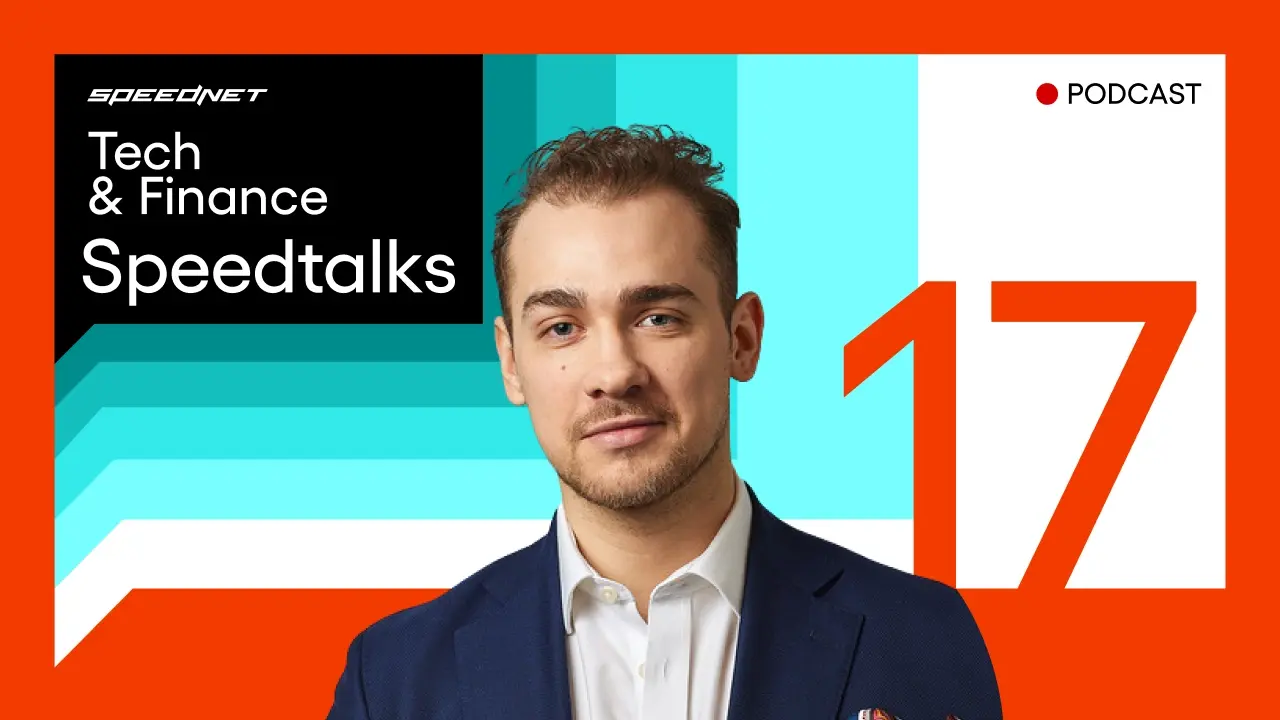003: The Rise and Impact of Buy Now, Pay Later (BNPL)


Hello and welcome to Speedtalks, the podcast where we dive into everything tech in the financial industry.
Buy Now, Pay Later
The main theme of today’s episode is about Buy Now, Pay Later. BNPL is a short-term financing service that allows consumers to pay for online purchases of goods and services at a later date. The plan for today is to start with a brief overview of the product and the concept. I will share some examples of the most popular solutions out there. I will explain how Buy Now, Pay Later influences customer behaviour and discuss implications for banks and financial institutions. BNPL boomed during the good economy and during the pandemic times, with low or zero interest rates fueling its growth. And I’m just keen to understand how it is doing now when the money is not cheap anymore.
So whether you are a fintech, a bank, a retailer operating in that space, or just curious about the latest financial trends, we packed this episode with valuable information that you definitely don’t want to miss.
Overview of the BNPL Market
OK. So, let’s start with a brief overview of the growing popularity of Buy Now Pay Later solutions. Because deferred payments are, in practice, let’s say, unsecured consumer credit and are for sure an increasingly popular option to pay for products and services and are often operated by fintechs. So that’s that’s the concept. The loan is initiated directly at the point of sale during the purchase. And at its core, BNPL is, as a deferred payment scheme, not revolutionary. It’s a model similar to that of point-of-sale financing provided by traditional lenders.Nonetheless, the popularity of that concept is growing.
The market size of the, let’s say, the total market global size of BNPL services in 2023 was more than $300 billion and is expected to grow at a compound annual growth rate of over 25% until 2026. Geographically, Northern America is projected to account for over 40% of that transaction global value and Buy Now, Pay Later services in total. It is growing significantly and is predicted to continue that growth path. Meanwhile, last year, the European Buy Now, Pay Later transaction value captured around 30% of the overall market size. So again, at its core, it’s not revolutionary. It’s a concept similar to other financing solutions. But definitely, this particular product has enjoyed significantly accelerated growth due to the COVID-19 pandemic and the increase, let’s say, the popularity of online purchases in the 1st place. But we will dig a little bit deeper into that in a second.
Buy Now, Pay Later Companies
So, if you look at the market of Buy Now, pay later providers, you can more or less split them into three categories. The first, let’s say, monoline BNPL providers, and I think Klarna, the Unicorn, is one of the most popular examples here. Then, the traditional lenders slash incumbent banks – and you can name any bank here or a MasterCard kind of player here. And then big tech companies like Apple also have their own Buy Now, Pay Later schemes. If you want more examples, there are firms like Affirm After Pay, Amazon Payments, PayPal Pay Later, and fintechs like Payka Poland or now BLIK Buy Now, Pay Later. The instant payment scheme also introduces deferred payment systems, and the list goes on and on.
Buy Now, Pay Later and the Customer Geographics
If you look at who is using Buy Now, Pay Later services, the customer geographics are pretty interesting here because it turns out that millennials and Gen Z consumers are the primary adopters of Buy Now, Pay Later. It turns out that the majority of the users are under 40 years old. While it’s fair to say that it is an appealing concept to consumers with mostly irregular income streams or unpredictable expenses, such as freelancers, gig workers, or students here.
Influence on Customer Behavior
So, the product itself definitely has a huge influence on customers’ purchasing behaviour. If you look at the data, it turns out that 9 in 10 people suggested that their shopping habits had changed since they started using Buy Now, Pay Later schemes. And there are a few, let’s say, points to discuss here. The first aspect is related to instant gratification, yet deferred payment for that gratification. So I’ll say it even plays with your emotion to the extent where you are more inclined to make the purchase immediately, even for higher-value items, because BNPL allows you to defer that payment for later. Where you don’t think about it while enjoying the product immediately right here, right now.
So, as a result, this brings us to an overall increase in spending as customers feel empowered to buy more because they can spread the payments over time and in instalments. The ability to pay in instalments may also encourage customers to add more items to the basket, apparently leading to larger average transaction sizes because customers may explore a wider range of products or maybe a wider range of merchants, knowing that they have the option to pay later and in instalments, which leads to increased digital spending habits at the end of the day, because a typical user of a Buy Now, Pay Later scheme feels more comfortable making a larger purchase more frequently than they would if required to pay upfront, that’s for sure.
Changing Perception of Affordability
So, it does change customer behaviour, leading to a higher volume of transactions for merchants, who are among the biggest beneficiaries here, and increased consumer spending overall. Buy Now, Pay Later does alter customers’ perception of affordability with something more comfortable, making purchases that they might otherwise consider too expensive upfront. And the seamless integration of BNPL into e-commerce platforms that are super popular at the moment just encourages customers to engage more frequently with online shopping.
And if you look at what the fuel was for that growth and popularity, it was definitely the pandemic, the time when everyone first started to buy online, and it sort of stayed with us. Everyone is buying online to date, even though we are no longer in a lockdown. It’s just convenient and easy, more fun, and more affordable, as you can see. So, the overall growth and increase of online retail services translated into creating that space for the Buy Now, Pay Later deferred payment scheme.
Impact of Economic Conditions on BNPL
On top of that, up until quite recently, we’ve lived in an economy where money or credit was super cheap. You had super low interest rates or even 0% interest rates. So the whole concept of financing this, this deferred payment, was not that costly in the first place. If you look at the situation in the economy now, when money is no longer expensive, interest rates are higher, inflation rates are higher, etc., the Buy Now, Pay Later scheme is still popular. It has impacted consumer behaviour to the extent that we are not making purchasing decisions as we were before or, in the same, let’s say, the habits have changed. We’re not making the same decisions anymore or doing the same things as before. That also has certain implications for banks and financial institutions because it presents both opportunities and challenges.
Implications for Banks and Financial Institutions
On the one hand, BNPL offers banks a new avenue for customer acquisition and revenue generation. Particularly among these younger demographics, younger users who may be less inclined to use traditional banking products in the 1st place yet can be open to using that particular product to facilitate their purchasing situation. By partnering with BNPL providers or developing their own BNPL offerings, banks, specifically more traditional banks, can attract new customers and new demographics and drive engagement through personalised payment solutions tailored to the individual needs of their target market or new target markets.
According to a study by PYMNTS, 70% of current BNPL users indicated an interest in making use of their own banks and BNPL services should they be made available, which is a huge potential. It tells you as a bank that your customers would use you as a BNPL provider instead of any other fintech provider out there just because it’s easier. It’s just a huge, huge opportunity to tap into. So banks can also benefit from a well-established image developed over decades compared to, for example, young fintechs who do not enjoy that level of respect or brand image.
Challenges for Banks
On the other hand, BNPL introduces complexities in risk management and regulatory compliance. People are questioning whether the customers of BNPL can pay off their credits later on. There’s huge competition, specifically from big fintech companies, that can be more flexible and can act quickly. The market is already quite saturated. It’s early 2024, and my personal feeling is that the BNPL space is quite saturated. Naturally, there are companies that specialise in B2C BNPL, retail BNPLB, B2B, or SME BNPL. But at the end of the day, it’s the same concept, just different hats. As such, in this situation, banks must strike a balance between innovation and risk mitigation, perhaps by partnering with fintechs with ready-made products that target their niche. I don’t know that that is usually the way to go.
Future of BNPL
So, were I to wrap BNPL up, I would say that it boomed during the good economy. But it seems to be immune even in a bad economy. It looks like there’s a product market fit, a very good product market fit for BNPL services and products, specifically among younger generations who are digital-first and are e-commerce natives. As long as relevant technology can be leveraged to deliver that experience to both customers and fintech slash banks, my prediction is that BNPL is definitely here to stay. Let me know what you think. Let me know if you have any experience using BNPL services.
I personally can say and can share that wherever I see that I can pay in 10 instalments and there’s a 0% interest rate on deferring that payment into instalments, I tend to use that service. I’m not potentially deferring that payment in time, but I am splitting that into 10 parts. I’m not paying anything extra for that service. This, just for me personally, allows me to maybe decrease the impact of that particular purchasing decision on my family budget. Let me know what you think. If you would like to have another topic covered in one of the future episodes, do let me know.
That was Speedtalks by Speednet. Thank you, and until next time.




